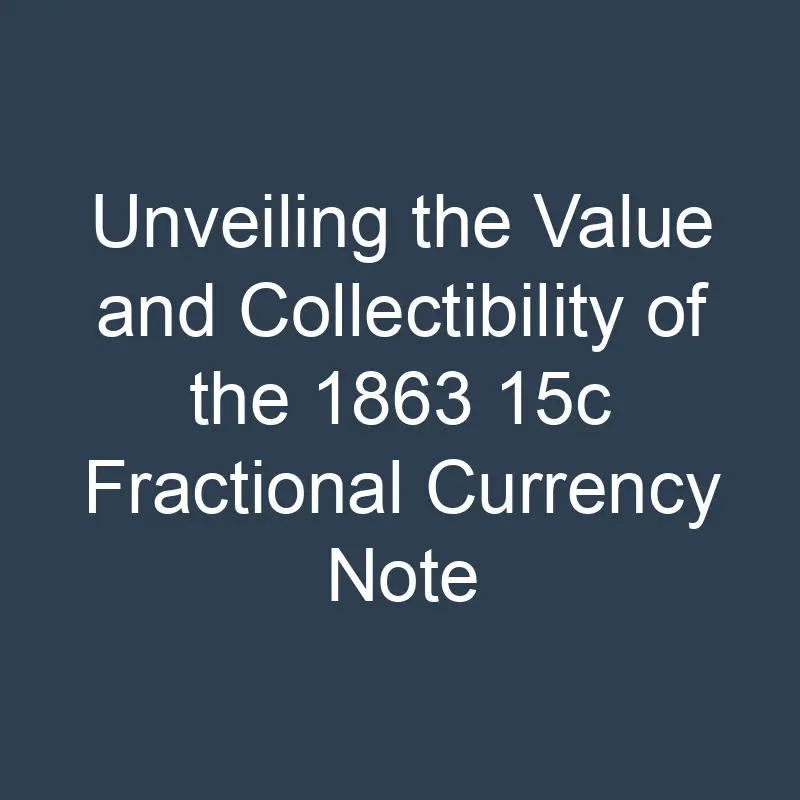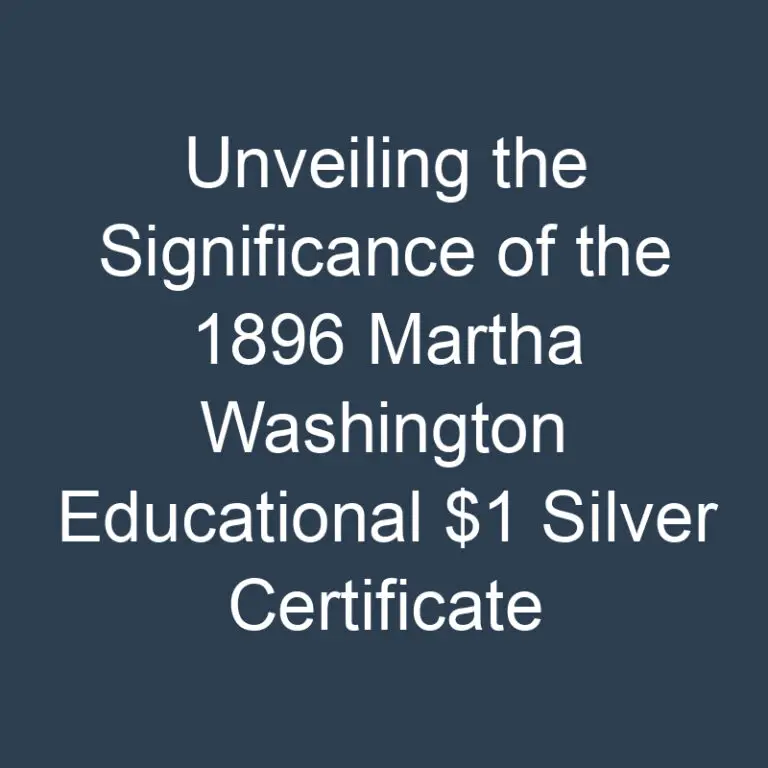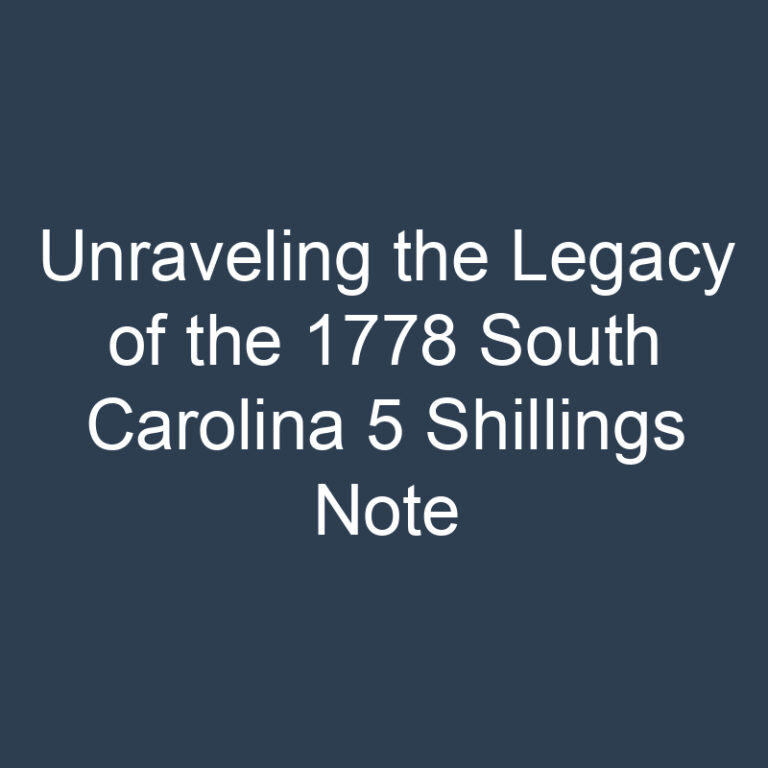
Welcome to our exploration of the fascinating world of the 1863 15c fractional currency note. As currency enthusiasts, we are always intrigued by the rich history and intricate details of these unique pieces of monetary art.
The 1863 15c fractional currency note holds a special place in the realm of numismatics, with its distinctive design and historical significance. Join us as we delve into the story behind this fractional currency note and uncover the secrets it holds.
Through our expert analysis and in-depth research, we aim to shed light on the importance of the 1863 15c fractional currency note in shaping the monetary landscape of its time. Let’s embark on this journey together and unlock the mysteries of this intriguing piece of currency history.
History of the 1863 15c Fractional Currency Note
The 1863 15c fractional currency note holds a significant place in the history of American currency. Issued by the United States government during the Civil War, it served as a solution to the shortage of coins caused by the hoarding of precious metals.
- First Issued: The 1863 15c fractional currency note was first authorized for circulation on March 3, 1863.
- Design: Featuring intricate engravings and anti-counterfeiting measures, the note was small in size compared to the traditional currency of that era.
- Purpose: It aimed to facilitate daily transactions for small amounts without relying heavily on scarce coins.
During the Civil War, the need for small denomination currency was crucial, leading to the issuance of the fractional notes. These notes were printed in various denominations, including the 15c, to meet the public’s demand for accessible currency.
The unique history behind the 1863 15c fractional currency note showcases the innovative approach taken during a turbulent period in American history. This currency note not only filled a gap in the monetary system but also paved the way for future developments in American currency design and production.
Design and Features
When examining the 1863 15c fractional currency note, we are struck by its intricate design and unique features that set it apart from other currency of its time. This note, with its detailed engravings and anti-counterfeiting measures, represented a significant leap forward in currency design during the Civil War era.
One notable feature of this fractional note was the inclusion of spirographic lathe work, a complex pattern that served as a deterrent to counterfeiters. This intricate design element not only added aesthetic appeal but also made it challenging to replicate the note accurately.
Additionally, the green tint on the 15c fractional currency note was another innovative aspect that aided in distinguishing it from other denominations. This distinctive color choice was not only a visual cue for users but also a practical measure to prevent fraud.
Furthermore, the inclusion of bust portraits on the obverse side of the note added a touch of sophistication and artistry to the overall design. These finely crafted portraits of notable figures provided a sense of history and importance to the currency, elevating its value beyond its monetary worth.
The design and features of the 1863 15c fractional currency note were not merely practical but also symbolized a forward-thinking approach to currency development during a pivotal period in American history.
Significance in Numismatics
When examining the 1863 15c fractional currency note in the realm of numismatics, we uncover its pivotal role in the evolution of American currency. This note symbolizes a shift towards increased security and artistic intricacy in monetary design during the Civil War era.
In the field of numismatics, the 1863 15c fractional currency note stands out for its innovative elements and anti-counterfeiting features, setting a new standard for future currency development. Its intricate engravings and spirographic lathe work not only served as aesthetic embellishments but also posed significant challenges to counterfeiters.
Moreover, the inclusion of bust portraits on the note added a historical dimension to its design, reflecting the cultural context of the time. This artistic choice not only elevated the note’s visual appeal but also contributed to its historical significance in the numismatic world.
In essence, the 1863 15c fractional currency note holds a special place in numismatics as a testament to the innovative spirit and artistic prowess of the era. Its significance goes beyond its monetary value, serving as a window into the rich history of American currency and the evolution of security features in note design.
Collectibility and Value
When it comes to collectibility and value, the 1863 15c fractional currency note certainly holds a special place in the world of numismatics. Numismatists and collectors alike are drawn to this particular note for several reasons:
- Historical Significance: The note’s role in advancing American currency design during the Civil War era adds a layer of historical importance that appeals to many collectors.
- Innovative Features: With its intricate engravings, anti-counterfeiting measures, and spirographic lathe work, the note set a new standard for monetary development in the 19th century.
- Cultural Relevance: The inclusion of bust portraits on the note added a touch of historical and cultural significance, further enhancing its appeal.
In terms of value, the 1863 15c fractional currency note can vary depending on factors such as its condition, rarity, and demand in the market. Here are some key points to consider:
- Condition: Notes in pristine condition with minimal wear and tear command a higher value among collectors.
- Rarity: The scarcity of certain variants or series of the note can significantly impact its market value.
- Demand: High demand from collectors interested in American currency history can also drive up the value of these notes.
Overall, the collectibility and value of the 1863 15c fractional currency note make it a sought-after piece for numismatists looking to add a piece of Civil War-era monetary history to their collections.
Key Takeaways
- The 1863 15c fractional currency note was issued during the Civil War to address the shortage of coins, making it an innovative solution for daily transactions.
- Its intricate design with anti-counterfeiting measures, spirographic lathe work, and green tint set it apart from other currency notes of that time.
- In numismatics, this note holds significance for its role in advancing American currency design and security features, reflecting the era’s innovative spirit.
- Collectors value this note for its historical importance, innovative features, and cultural relevance, with factors like condition, rarity, and demand influencing its market value.
Conclusion
The 1863 15c fractional currency note stands as a prized possession in the realm of numismatics, embodying a rich historical narrative that resonates with collectors worldwide. Its intricate engravings, anti-counterfeiting features, and cultural significance make it a coveted item for those passionate about American currency history. Factors such as rarity, condition, and market demand play crucial roles in determining its value, with well-preserved variants fetching premium prices. As a tangible piece of Civil War-era monetary evolution, this note continues to captivate enthusiasts seeking to enhance their collections with a touch of the past. Its enduring appeal and significance underscore its enduring relevance in the ever-evolving landscape of numismatic appreciation.
Frequently Asked Questions
What is the significance of the 1863 15c fractional currency note in numismatics?
The 1863 15c fractional currency note holds historical importance for its role in shaping American currency design during the Civil War, featuring innovative engravings and anti-counterfeiting measures that set new standards in 19th-century monetary development.
What factors affect the value of the 1863 15c fractional currency note?
The value of the 1863 15c fractional currency note is influenced by factors such as condition, rarity, and market demand. Well-preserved notes of certain variants are highly sought after, commanding higher prices among collectors.
Why is the 1863 15c fractional currency note desirable to collectors?
Collectors are drawn to the 1863 15c fractional currency note for its historical significance, intricate engravings, and cultural relevance, particularly the inclusion of bust portraits. Its association with American currency history during the Civil War era solidifies its status as a sought-after piece for numismatists.






